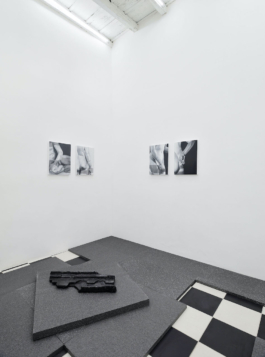


x
Andrea Mauti
The space imagined by Andrea Mauti for ADA simulates the fragmentation of a possible archaeology, where the ephemeral dimension of the industrial object adds up and overlaps to the ancient sculptures’ one, generating an annulment of the space-time dimension. Several reproductions of the same sculptural objects are covered with digital residues, which settle on the surface of the canvas, both protecting and preventing the whole fruition of the image.











Andrea Mauti
The space imagined by Andrea Mauti for ADA simulates the fragmentation of a possible archaeology, where the ephemeral dimension of the industrial object adds up and overlaps to the ancient sculptures’ one, generating an annulment of the space-time dimension. Several reproductions of the same sculptural objects are covered with digital residues, which settle on the surface of the canvas, both protecting and preventing the whole fruition of the image.










